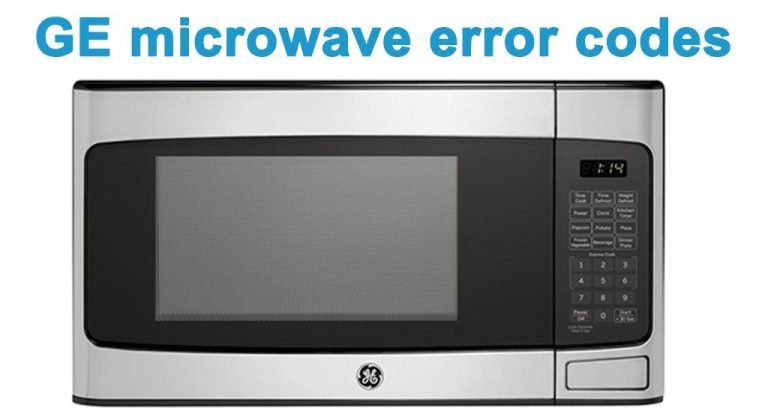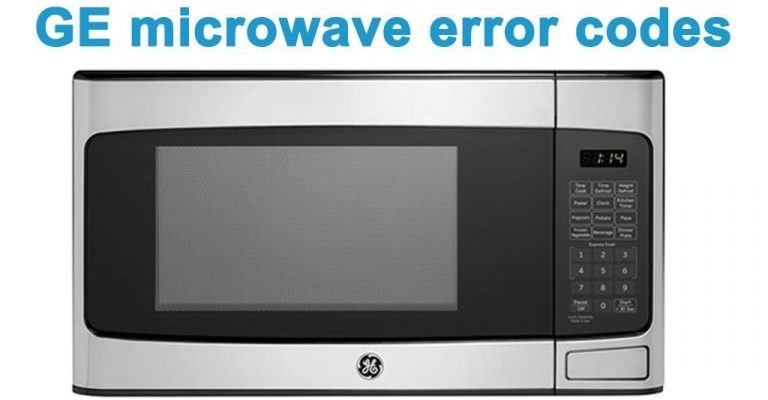
Essentially, the OE error code is your microwave’s way of signaling that there’s a problem with the microwave’s sensor system. Think of it as your car’s check engine light coming on. The microwave senses that some components aren’t functioning as they should, and like that warning light, it draws your attention to an internal issue that needs addressing. Understanding these issues can not only help you troubleshoot your appliance but can also extend its life.
Understanding the OE Error Code
So, what exactly does the OE error code mean in layman’s terms? Well, every microwave, including those from GE, uses sensors to regulate functions such as cooking time and temperature. When these sensors fail or get faulty readings, the microwave cannot operate correctly, and that’s when the OE error code appears. It’s as if the microwave received a confusing signal and it’s responding with a “Hey, check out what’s happening here!”
For example, consider the moisture sensor, which is an essential part of your microwave. It assesses the humidity level inside as your food cooks. If it sends an incorrect signal—perhaps thinking there’s too much or too little moisture—the microwave gets confused. This miscommunication can result in the OE error, halting all operations until the issue is resolved.
Here’s the deal: the OE code can be triggered by different sensor-related issues, each requiring its specific fix. Just like you wouldn’t ignore a smoke alarm, it’s essential not to overlook this error. Let’s dig deeper into these common culprits to help you get back to hassle-free microwaving.
Sensor Malfunction
You might be wondering, what causes a sensor to malfunction? Well, sensors are sensitive components that can be affected by everyday use. Imagine them as delicate gauges constantly fine-tuning your microwave’s performance. Over time, these sensors might fail due to simple wear and tear, much like how a tire might lose its grip after years on the road.
A common culprit for sensor malfunction is exposure to excess heat or moisture. Microwaves generate a significant amount of both, so it’s not surprising that sensors might sometimes struggle. For instance, repeated exposure to steam can interfere with a moisture sensor’s ability to provide accurate readings. It’s like trying to read a fogged-up mirror—signals become blurred, resulting in errors.
To address this, consider checking the sensor for any visible damage or residue build-up. In many cases, gently cleaning the sensors can resolve minor issues. But remember, if the problem persists, the sensor might need replacement. It’s always a good idea to consult your microwave’s manual or a professional if you’re unsure.
Control Board Issues
Another possibility is a problem with the control board, which is essentially the microwave’s brain. If the sensors are like the senses, the control board processes all the information and decides how to act. When the board misreads sensor data, the whole system can malfunction, much like a GPS leading you astray due to outdated maps.
Common control board issues might arise from power surges, electrical malfunctions, or even physical damage over time. Imagine trying to run a computer with inconsistent power supply—it won’t perform optimally. If your microwave has been subject to a recent power cut or surge, it might have affected the control board’s operations, triggering the OE error code.
Solving control board problems often requires a more technical approach. Resetting the microwave by unplugging it for a few minutes can sometimes clear transient issues. However, persistent problems might need professional attention, as the control board might require repair or replacement.
Preventative Measures and Next Steps
Now, what can you do to keep these issues at bay? Regular maintenance is key. Think of it as a fitness routine for your microwave—keeping it in top shape prevents unexpected problems. Regularly clean the inside of your microwave, focusing on sensors, and ensure no food debris is left after cooking.
Also, avoid slamming the microwave door, as this can jolt the internal components, potentially leading to sensor or control board damage. Consider using a surge protector to guard against electrical spikes that could harm the control board.
If you encounter the OE error, start by performing a simple reset. Unplug the microwave, wait a few minutes, then plug it back in. This action can sometimes resolve minor glitches. However, if the error persists, it might be time to consult the GE customer service or a qualified technician to get back to seamless cooking.
By understanding and addressing the common causes of the OE error code, you’ll not only resolve current issues but also prevent future ones, ensuring your microwave stays reliable and efficient.
